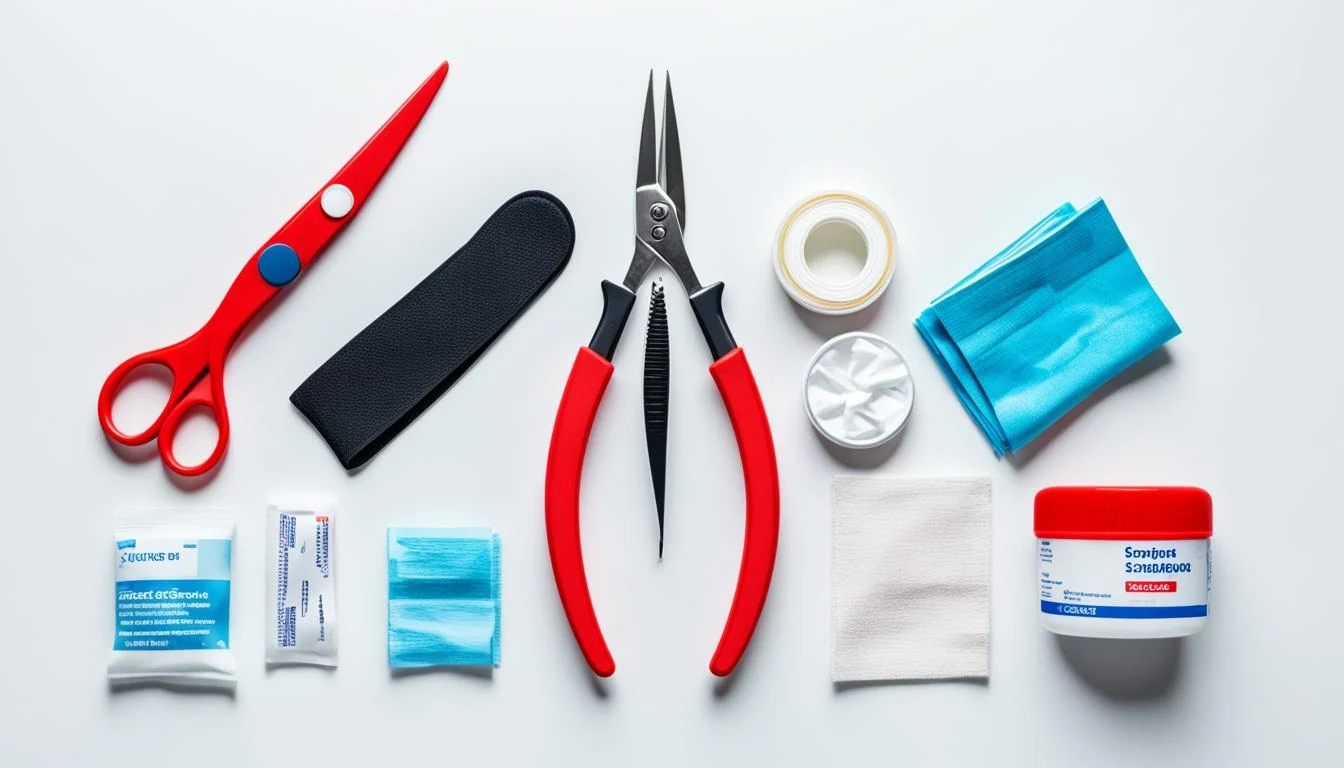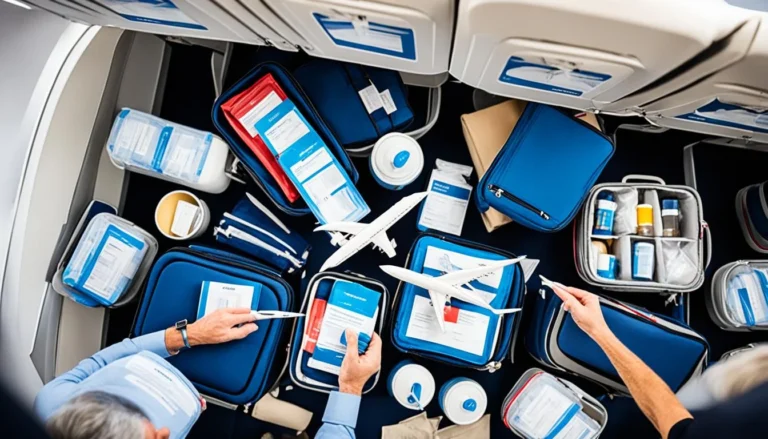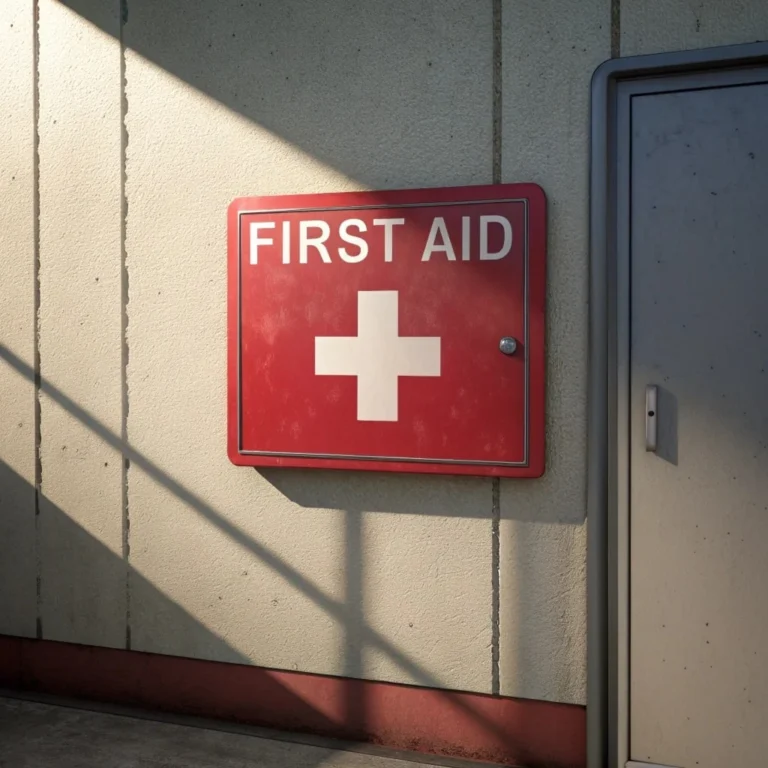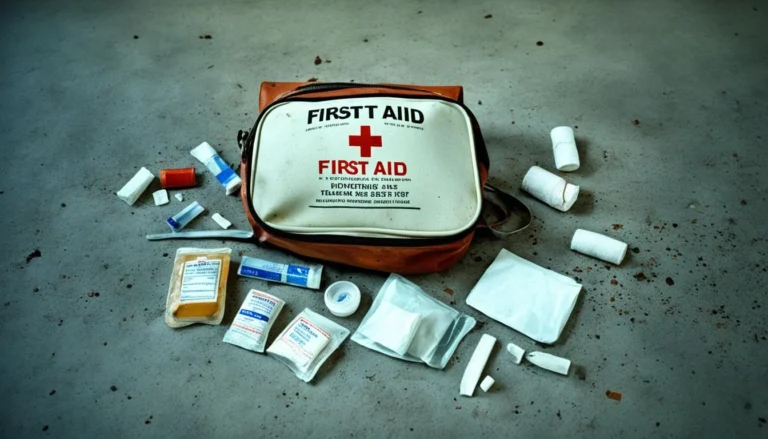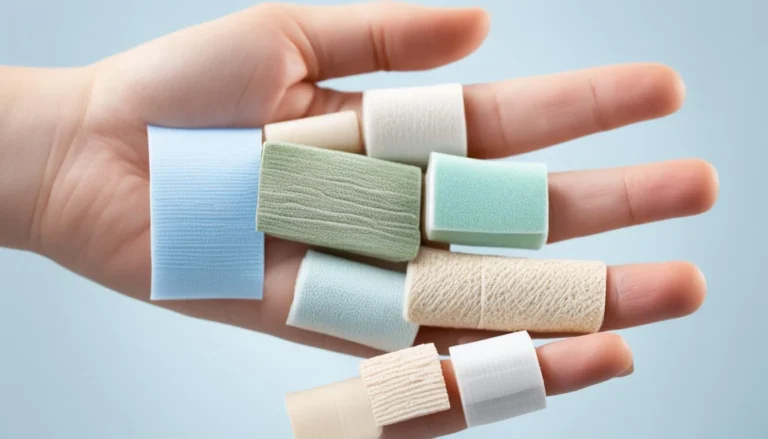Essential Uses of Scissors in a First Aid Kit
Scissors are key in every first aid kit. They are very useful for emergency care and safety preparation. Their main job is to cut bandages, dressings, and tape. This ensures wounds are managed rightly and kept clean. First aid scissors are also needed to take off clothes fast so injuries can be seen. This allows for easy changes of bandages without extra harm. They can even cut tough items like seatbelts, vital in rescues, proving they are essential medical tools.
Key Takeaways
- Scissors are essential for accurate cutting of bandages and dressings.
- Vital for quick removal of clothing in emergency care.
- Promote proper wound management and hygiene.
- Can cut through tough materials like seatbelts for effective rescue.
- High-quality scissors are crucial for effective first aid responses.
Introduction to First Aid Scissors
First aid essentials include many tools, and medical scissors are key. They are crucial in medical and rescue missions. These scissors offer quick care and help manage medical items better.
Importance of Including Scissors in a First Aid Kit
Medical scissors are a must in any first aid kit. They are great for more than cutting bandages. In emergencies, they help with quick care. They can also safely adjust medical supplies when needed.
Overview of Their Versatility and Essential Use
Medical scissors are crucial for many tasks. They can cut clothes to reveal injuries. They are also useful for cutting tape and removing someone from a seatbelt. Their many uses make them vital for being prepared for emergencies.
Types of Scissors for First Aid
It’s vital to have the right kind of scissors in your first aid kit. They help respond quickly and effectively in emergencies. Various scissors are made for specific jobs in dealing with injuries. Let’s explore the main types you might need:
Bandage Scissors
Bandage scissors, or “nurse’s scissors,” have one blunt and one sharp tip. This design helps cut bandages, gauze, and tape close to the skin safely. They are key for first aid because they avoid hurting the patient.
Tuff Scissors
Tuff scissors, also called rescue or trauma scissors, cut through tough materials like clothing and seatbelts. In critical moments, they provide a way to reach injuries fast and safely. They are indispensable in serious accidents and emergencies.
Surgical Scissors
There are many types of surgical scissors for cutting skin, tissues, and stitching. These tools are necessary for advanced medical care in first aid. They offer the precision required for more delicate tasks.
It’s important to know how to use each scissors type effectively. Choosing the right ones ensures your kit is ready for various medical situations. This way, you prepare for many different emergencies and needs that may arise.
Cutting Bandages and Dressings
Scissors in first aid kits have a key role. They are used for cutting bandages and dressings to the right size. This helps wounds get the perfect cover. It makes sure the wound is well taken care of. This way, the chances of an infection go down.
The right scissors also make the patient feel safe and comfortable. This is very important during first aid.
In an emergency, how you cut bandages is critical. It’s part of good wound care. These scissors can cut many types of materials. They are a must-have in first aid kits. Precise cuts mean better care. This speeds up recovery and gives better results.
| Scissors Type | Use Case | Benefits |
|---|---|---|
| Bandage Scissors | Cutting bandages and dressings | Ensures precise sizing and reduces infection risks |
| Trauma Scissors | Handling tough materials | Allows quick access to injuries |
| Surgical Scissors | Surgical cutting | Facilitates precise incisions |
What Are Scissors Used For In A First Aid Kit

Scissors are essential in first aid kits. They’re used for cutting bandages, adjusting medical supplies, and more. Their uses are crucial, especially in emergencies. Without scissors, it can be hard to quickly help someone in need.
Scissors are great for quickly taking off clothes near wounds. This is vital in saving lives. They also help easily open sterile packages. This ensures medical supplies are ready when required. Scissors can even stand in for other tools that aren’t available, which is very important for safety.
They’re perfect for resizing bandages and dressings too. By using scissors, proper wound care is easier. This lowers the chance of infections and helps wounds heal better. Scissors really are key in making sure first aid works well in an emergency.
| Task | Description |
|---|---|
| Resizing Bandages | Essential for custom fit and preventing contamination. |
| Emergency Clothing Removal | Quick access to injuries, vital for life-saving efforts. |
| Adjusting Medical Supplies | Ensuring proper fit and efficiency in treatment. |
| Opening Sterile Packages | Readily accessing medicinal supplies to hasten response times. |
Removing Clothing in Emergency Situations
In urgent situations, taking off clothes quickly and carefully is key to helping injured people fast. The right tools are important. They help keep the person safe while rescuers work to help them.
Ensuring No Additional Harm
Removing clothing fast to give medical help must be done without harming the person more. Trauma shears are made for this job. They can cut clothes well. But they are designed to not hurt the person, making the rescue safer for everyone.
Precision and Speed in Emergencies
In emergencies, every second counts. Trauma shears are quick and precise. They help medical teams get to injuries fast, without wasting time. This means doctors and nurses can act quickly, helping patients better in urgent situations.
| Tool | Purpose | Benefit |
|---|---|---|
| Trauma Shears | Safe Clothing Removal | Minimises Risk of Injury |
| Medical Scissors | General Cutting | Versatility in Emergency Response |
Trimming and Adjusting Medical Supplies
Medical scissors are key for cutting and fitting healthcare items. They make sure items fit just right, aiding treatment and patient ease. From tape to splints, they help make things perfect.
For first aid kits, scissors are vital to change supplies for personal use. Each kit item is tailored, helping heal better and faster.
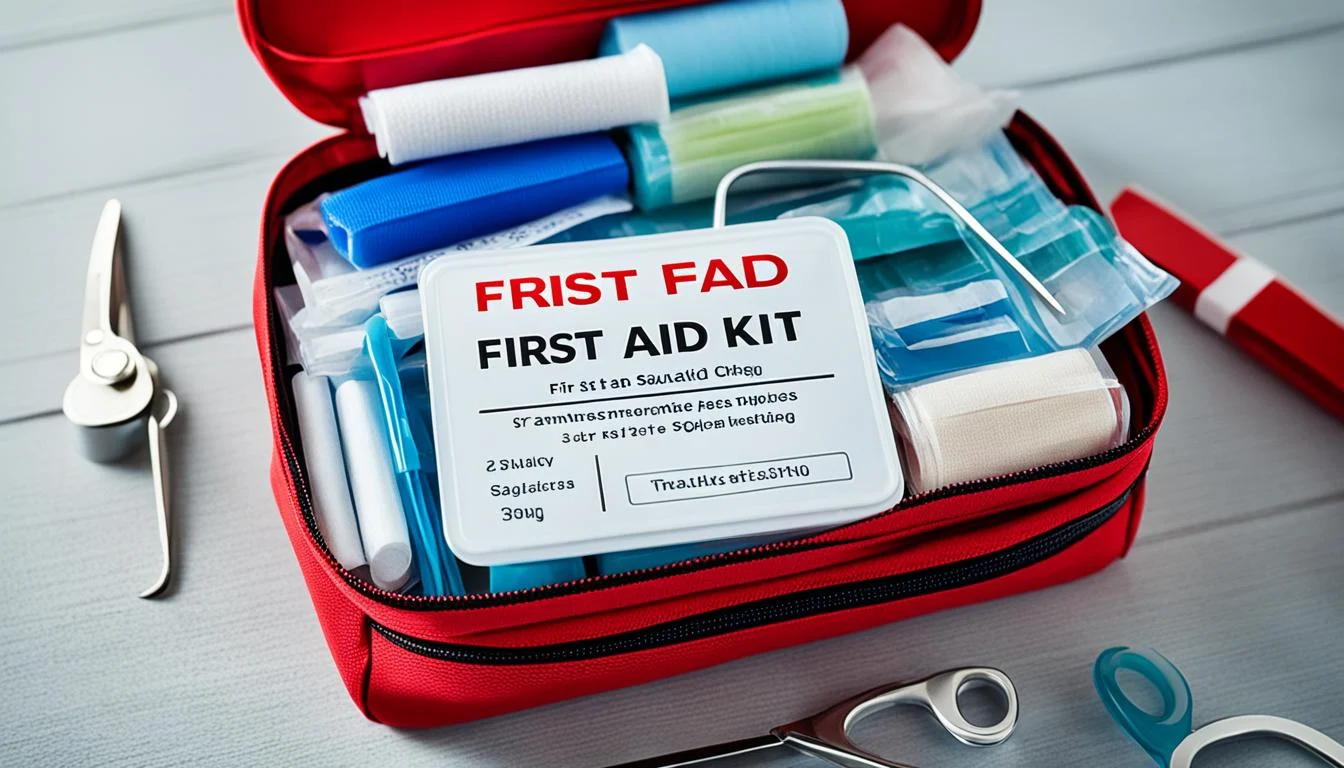
Custom-fitting medical gear shows how scissors are versatile. They’re essential for quick, exact care in emergencies. Their role in first aid and medicine is unmatched.
Opening Packaging of First Aid Supplies
In emergencies, getting to sterile medical supplies quickly is crucial. Scissors in first aid kits help with the opening of sterile packages fast. This is key for a quick medical response. Having scissors in kits is vital.
Scissors are great for cutting into sterile packages. They help you get to bandages and antiseptics right away. This is important for treating wounds well. It shows how critical good scissors are in your kit.
Scissors are made to cut packages but keep their contents clean. This makes using first aid materials safe and quick. From gauze to sterile dressings, scissors make emergency preparedness easier.
Scissors are really important for a quick medical response. They make sure you can use first aid materials fast and safely. This helps in emergencies, leading to better health outcomes.
Freeing Entangled Individuals
In moments of crisis like car accidents, scissors are vital for rescue efforts. They are made to cut through ropes fast, a key job in emergencies. Having them in first aid kits means help can arrive quickly to prevent more harm.
Cutting Seatbelts and Ropes
Car accidents can leave people stuck in their seatbelts or wrapped in ropes. With a seatbelt cutter, scissors can free them without added hurt. This quick action brings comfort and less stress to those trapped.
Rapid Rescue Techniques
When time is of the essence, quick rescue methods are essential. Scissors for cutting ropes are sharp and ready for fast use. They help rescue teams work swiftly, avoiding any worsening of the situation. The right tools make it easier for rescuers to help people stuck in different ways.

